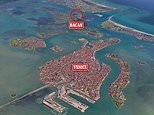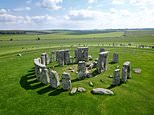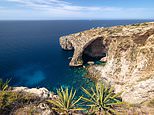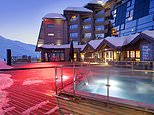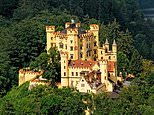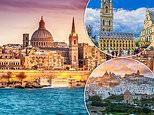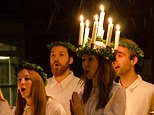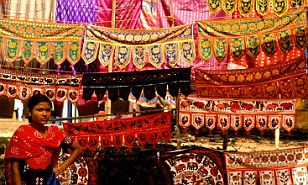Into the Valley of the Kings
By Ceri Hughes, The Mail on Sunday
Last updated at 15:23 10 May 2006
As we glided past a large rock where cormorants stood, holding out their wings to dry, our Nubian boatman skilfully tacked to fill the enormous white sail of his tall-masted felucca.
Kingfishers, egrets, herons and two little boys in a tiny rowing boat were our only companions as we sailed towards the tombs of the nobles past the Nileometer, built by the ancients to measure flood levels, and Kitchener's Island, with its lush botanical gardens. Everything seemed to glow in the afternoon sun. It all felt so exotic - and then Saeed said, in good English: 'Do you know Dawlish? I had a very nice holiday there last year and saw a high tide.' He was also very fond of the London suburb of Crouch End, where he has friends.
At £5 an hour, payable to the feluccamaster middle-man at the Old Cataract Hotel's private dock, this was our most extravagant outlay in a week on the Nile. So goodness knows how long it took him to save for a trip to England. He dropped us back at the hotel in perfect time to be on the terrace, reserved exclusively for hotel guests, for a sundowner.
We gazed across the river and the line of feluccas at their moorings, sipped our G&Ts as the sun slipped behind the Aga Khan's huge but simple domed mausoleum on the horizon and mused that Agatha Christie might have occupied the very same spot after a hard day penning Death On The Nile.
Other famous residents include Winston Churchill, who went to the hotel restaurant's opening party in 1902, Howard Carter, hotfoot from discovering Tutankhamun's tomb, and Princess Caroline of Monaco.
The pale terracotta-washed Old Cataract, with its high ceilings, antiquated cage lift operated by a tall man in a fez, elegant lounges and stunning Nile views, is the jewel of Aswan, built by Thomas Cook for the new wave of Victorian tourists, and the last stop on our Nile cruise. For four days we had floated gently in great style from Luxor aboard Alexander the Great, a boat that looks from the outside deceptively like any number of Nile cruisers.
But once up the gangway we found ourselves in the reception of a boutique hotel, and we sat on asymmetrical sofas on a shiny wood floor while we checked in.
Our accommodation was another surprise. Instead of the usual 60 cabins with teeny-weeny shower rooms, for a boat its size, Alexander the Great has only 30 smart and airy ones. Each has two big windows and a proper bathroom.
The cabins have names such as Jungle Paths, Touch Of The Seventies, Orient Red and Journey To China. Ours was so comfortable it was a joy to spend the siesta hour lying on the bed as the green banks of the Nile slid by.
And a siesta was what was needed after the grand buffet lunches. Although I would have been quite happy to stay on board eating, reading and doing a spot of bird-watching, there was much to draw us ashore.
The ancient Egyptians rather helpfully built their temples and tombs near the Nile, and several millennia later the convenience of cruising from site to site has become a popular tourist route. The six Britons on board, all of us travelling with Discover Egypt - the only UK tour operator to offer Alexander the Great - had our own guide, Walid, to shepherd us around and tell us about the magnificent sites.
The excursions were all included in the cost of the cruise, and it was a treat to be in such a small group. Your standard cruise has gaggles of 25 or more to shuffle around.
At the temple of Karnak the 81ft obelisk in front of the left pylon looked familiar. It is one of a matching pair, the other being in Paris in the Place de la Concorde, where it was removed in 1835 - quite a feat, judging by the size of it.
In the Valley of the Kings our breath was taken away by the richness of the tomb decorations and brightness of the colours after 3,000 years.
An added excitement while we were there was the news that the first tomb since Carter and Canarvon opened King Tut's in 1922 had been discovered only the day before.
On to Queen Hatshepsut's imposing and incredibly modern-looking temple that sits against the same sand-coloured Thebian Hills, where we wished we'd packed eye drops when a dust storm whipped up and chased us about.
It had been an early start that day and by the time I had been knocked sideways by the beauty and poignancy of the elaborately adorned tomb of Amunhirkhepshef, a prince believed to have died at the age of nine in battle with his father, and run the gauntlet of the souvenir sellers in the rat race back to the car park, I was done in. What a joy it was to return to our neat and attractive cabin.
Other days were less demanding on the lazy tourist. We were driven in horse-drawn caleches to the wonderfully well preserved temple of Horus, the falcon-headed god.
And at Kom Ombo, our last archaeological wonder before arriving at Aswan, we stepped ashore at dusk and walked a few steps up to the temple for a pleasant hour, enjoying the carvings and magnificent pillars picked out by lights, as well as the curiosity of three mummified crocodiles in glass cases.
Over dinner that night we agreed a cruise on a minimalist modern boat to Egypt's ancient remains is the perfect combination of physical relaxation and mental stimulation.
Getting there:
Discover Egypt (020 7407 2111, www.discover egypt.co.uk) has a seven-night trip with one night's B&B in Luxor at the Old Winter Palace, a four-night cruise on Alexander the Great and two nights'B&B in Aswan at the Old Cataract Hotel, plus flights from Gatwick from £869pp.
Most watched News videos
- Scottish woman has temper tantrum at Nashville airport
- Tesla Cybertruck explodes in front of Trump hotel in Las Vegas
- Mass panic as New Orleans attacker flies down Bourbon street
- Shocking moment zookeeper is fatally mauled by lions in private zoo
- Horrific video shows aftermath of New Orleans truck 'attack'
- Meghan Markle celebrates new year in first Instagram video
- Tesla Cybertruck burns outside Trump hotel in Las Vegas
- See how truck that drove into crowd made it through police barrier
- Cheerful Melania Trump bops to YMCA at Mar-a-Lago NYE bash
- New Orleans terror attack suspect reveals background in video
- Plane passenger throws drink at flight attendant in boozy fight
- Horrifying moment yacht crashes into rocks and sinks off Mexico coast





